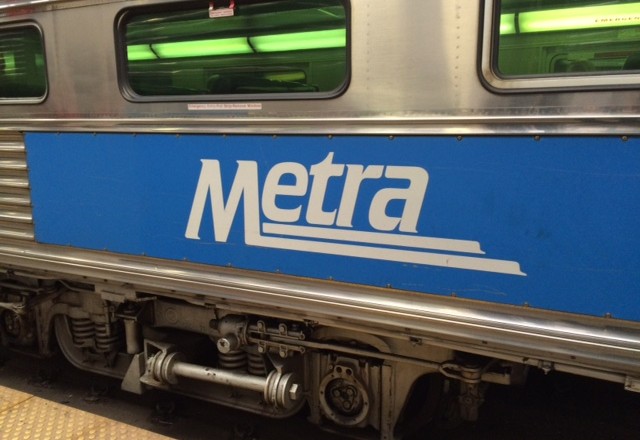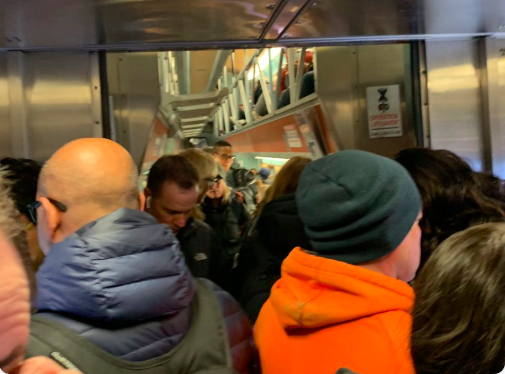Federal regulators have derailed a private corporation’s plans to build a new, multibillion-dollar, 261-mile railroad to bypass Chicago’s notorious freight congestion.
The U.S. Surface Transportation Board rejected an application from Great Lakes Basin Transportation Inc., saying the Crete-based company’s financial information is incomplete and “fundamentally flawed,” making it impossible to determine if Great Lakes can meet required statutory criteria.
In its decision issued Thursday, the three-member board pointedly described the financial fitness of Great Lakes as “clearly deficient,” based on the company’s admission that its current assets at the end of 2016 amounted to only $151.
The STB also questioned an “unexplained line item” in a balance sheet submitted by Great Lakes. That line item, for a negative $1,203,545, “appears to account for a substantial difference between (Great Lakes) assets and its liabilities and stockholders’ equity,” the decision said.
Great Lakes and its founder and managing partner, Frank Patton, have long promoted the $2.8 billion project as a remedy for Chicago’s “19th Century jumble” of freight rail lines. It’s often said that West Coast trains loaded with Asian imports can take days to pass through the city’s chokepoint to Eastern customers.
Great Lakes’ plan, filed with the STB on May 1, called for building a new railroad line in an irregular arc from southeast Wisconsin through Illinois and ending in northwest Indiana, across mostly rural land.
Indeed, Canadian National Railway followed the very same strategy when it won STB approval in 2008 to purchase the little-used Elgin, Joliet & Eastern Railway, giving it a bypass around Chicago.
Great Lakes told the STB that it has met over the past three years with “hundreds” of qualified investors, from individuals to banks and pension funds, along with potential investors in several other nations, the Middle East and Australia.
Great Lakes said potential investors could not commit to funding regulatory approval from the STB was obtained, but it was confident financing would be obtained, and the railroad would turn a profit after as little as three years.
In a statement Thursday, Great Lakes said it had no comment on the STB’s decision while it was “assessing its options.”
Great Lakes’ application prompted scores of protest filings from property owners, farm organizations, environmentalists, local governments and grass-roots opposition groups in at least seven counties in the three states. Public officials such as Illinois Sen. Dick Durbin and Reps. Adam Kinzinger and Robin Kelly also questioned the project.
Those opponents challenged the need for the rail line and Great Lakes’ financial wherewithal to construct it. Farm advocates said thousands of acres of highly productive cropland would be destroyed, properties would be divided, and scores of new rail crossings would block local transportation.
On Thursday, foes hailed the STB’s decision.
Mark Melin, a spokesman for the Janesville, Wis.-based group Rock (County) Against the Rail, said thousands had signed petitions against Great Lakes’ application.
Great Lakes was using “antiquated rail law and eminent domain to take advantage and grab land,” Melin said.
“When you look at the issues and the bigger picture, the minimal transportation gains (from the project) did not outweigh all the harm that would have been created,” Melin said. “I think the STB realizes that as well.”
Howard Learner, executive director of the Chicago-based Environmental Law & Policy Center, said the STB’s decision echoed several objections to Great Lakes’ financial fitness that the center had raised in a filing last week.
Learner was gratified that the STB discontinued the environmental review of the project, which he said would be a waste of time for the agency and preclude stakeholders from going through a “meat-grinder” of a process.
Joseph Schwieterman, a DePaul University professor and director of the Chaddick Institute for Metropolitan Development, said the STB’s decision shows how much persistence is needed to build a new major railroad line these days.
“It certainly tests the patience of investors who want to see a clear construction timetable,” Schwieterman said. “The railroad would be a complex undertaking, but it nonetheless is remarkable that it can be built with relatively little displacement of homes and businesses. I suspect the planning for it will continue after only a brief hiatus.”
— Richard Wronski


